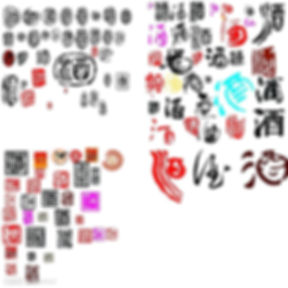Macao Wine Museum 2: why we did not have one?
The Wine Museum of Macau
Nothing overtly cultural about The Wine Museum of Macau was found during my investigation. The Wine Museum of Macau is just a functional device serving social and economic purposes. It does not serve any cultural and educational purpose as declared [viii] and falls short of what the other major wine museums of the world have been doing.[ix]
Established in 1995, Wine Museum resides in the building complex for housing other museums including the Grand Prix Museum, Maritime Museum, Lin Zexu Museum and the Macau Museum of Art. Although more than 900 wines are stored in the locked alcoves and glass display cases, they remain as artefacts imported from Portugal which fall short of the authentic heritage of Macau. Madeira from 1815, though impressive, testifies to the unauthentic ties of the Wine Museum.
Some 100,000 visitors have been recorded for the Wine Museum for 2004-2005.[x] Without government subsidies, the Wine Museum will still be operating at a loss in the foreseeable future regardless of the apparent economies of scale for pulling all six museums together under one roof.
While it could be easy to exagerae the contribution[xi] of Wine Museum as wine culture in 1980s and 1990s was very much a world phenomenon, it does adds to the dimension as a city of vice.[xii] Despite its subsequent developenmnts, the Wine museum was an uninteded establishment happened to bespearheading Portugal's wine thrust into China in mind, whose surge in demand of wines in mid 1990s apparently could qualify the efforts. It is to tell the story of Portuguese wine and to awaken interest in wine culture.[xiii]
The Wine Museum of Macau is considered by most wine professionals as part of the promotional program for wine importers and restaurateurs. Sufficed to say on its contribution is that, when the Macau Wine Museum opened in December, there really were only about 160 different labels offered in the grocery stores, wine shops and restaurants of macau, which contrasted well with 1000 different Portuguese wines on ale, and those bottles are being bought and drunk today.
It is a major prop for the tourism industry.[xiv] It is the tourist attractiom as well as an important trade office, acting as a platform for Portuguese wine imports into the region. It also serves as a site for seminars, conferences and trade discussions.
Wine Museum of Macau wouldnot have contuned to exist if not for the directive from the Central Governemnt to the Macau SAR, requesting sepcifically to keep everything culturally Portugese intact. Just as Peter Perdue[xv] says England is luck In the close promximaty to the coal mines in keep its developemt momemtum, Macau also attracted the ’smile’ of Fortuna. With the souverignty change of Macau in 1999 the Wine Museum is kept, regardles the operating expenses.
A Wine and Spirit Culture in Hong Kong in Early 19th Century?
Whether there emerged a culture of wine and spirits remained an area to be researched, but the infrequent appearance of advertisements from the newspaper[xvi] about t wines and spirits pointed to an apparently genuine demand for the products by both the civilian population[xvii] as well as by the soldiers[xviii], even though the findings could not convince about the diffusion of the culture to the indigenous population. Increasingly, the establishment of market prices in the buying and selling of wines and spirits within Hong Kong apparently pointed to emergence of a history of wine and spirits in the later stage of the development.






















